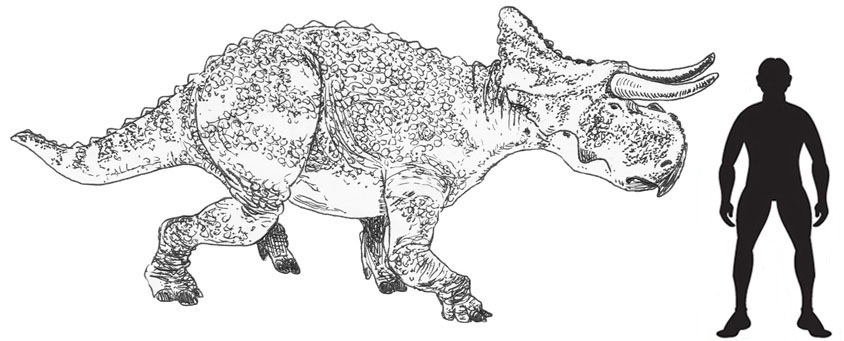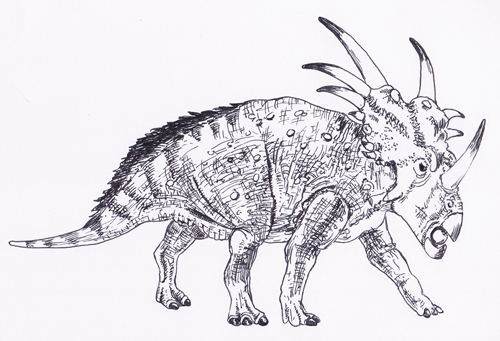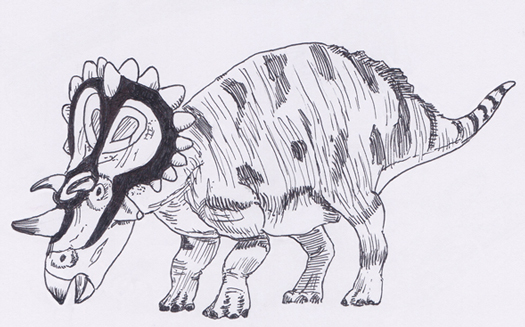A Helpful and Informative Ceratopsian Cladogram
Piecing Together the Horned Dinosaur Family Tree
Plans are in place at Everything Dinosaur to create a pdf file that highlights the evolution, radiation and diversity of the Ceratopsia. The aim is to use the numerous illustrations of horned dinosaurs that the company has built up in its extensive database to produce a simplified horned dinosaur family tree.
Dinosaur fans will be aware that over the last two decades, the number of formally described ceratopsid dinosaurs has increased significantly, mostly due to the number of new Late Cretaceous horned dinosaurs named from fossil discoveries in the United States and Canada. Model collectors will also know that there have been several new horned dinosaur models introduced over the last few years. This trend is set to continue. For every named prehistoric animal model that Everything Dinosaur supplies, we send out an accompanying fact sheet with that figure. In this way, our own image library for the ceratopsids has dramatically increased.
An Illustration of a Recently Described Horned Dinosaur

A scale drawing of the Late Campanian horned dinosaur called Nasutoceratops. Picture credit: Everything Dinosaur.
Picture credit: Everything Dinosaur
The picture above shows a scale drawing of the centrosaurine Ceratopsian Nasutoceratops (N. titusi) which was named and described in 2013.
To read an article about the discovery and naming of Nasutoceratops: Large Nose Horn Face.
Centrosaurine and Chasmosaurine
Traditionally, whilst the Ceratopsia includes numerous basal horned dinosaurs, the Ceratopsidae family, has been classified into two sub-families based on cranial ornamentation and horn morphology -the Centrosaurinae and the Chasmosaurinae. The large horned dinosaurs of the Late Cretaceous period, specifically the Ceratopsidae, were all quadrupedal with heavy, armoured heads. Palaeontologists used a simple method of assigning these types of dinosaurs to a sub-family:
- Centrosaurines – short neck frill with a large nose horn, bigger than the brow horns. This very simplistic description does not mean that centrosaurines had short frills. Most frills were ornamented and in the case of the centrosaurine Styracosaurus – spectacular.
A Drawing of the Spectacular “Short-frilled” Centrosaurine Styracosaurus
Picture credit: Everything Dinosaur
- Chasmosaurines – long neck frill with long snouts and the brow horns were usually bigger and more prominent than the nasal horn.
An Illustration of the Recently Described Chasmosaurine Regaliceratops (R. peterhewsi)
Picture credit: Everything Dinosaur
To view articulated ceratopsian figures: Beasts of the Mesozoic Figures.
A Ceratopsian Cladogram
As with most things related to palaeontology, the rather simplistic classification of centrosaurines and chasmosaurines has been undermined as new discoveries have been made. A case in point, is the recently described Regaliceratops (see picture above). It is for this reason that Everything Dinosaur team members are wanting to create their own cladogram.
We need some more illustrations to complete our data set, but once these have been commissioned we shall post up our own version of the horned dinosaur family tree. It might be interesting to populate one cladogram using our own dinosaur illustrations, a second, identical phylogenetic analysis can be produced, but this time using the actual models to illustrate the various taxonomic positions. It’s still a work in progress at the moment, but hopefully, we shall be able to produce something in the near future.
Visit the Everything Dinosaur website: Everything Dinosaur.



